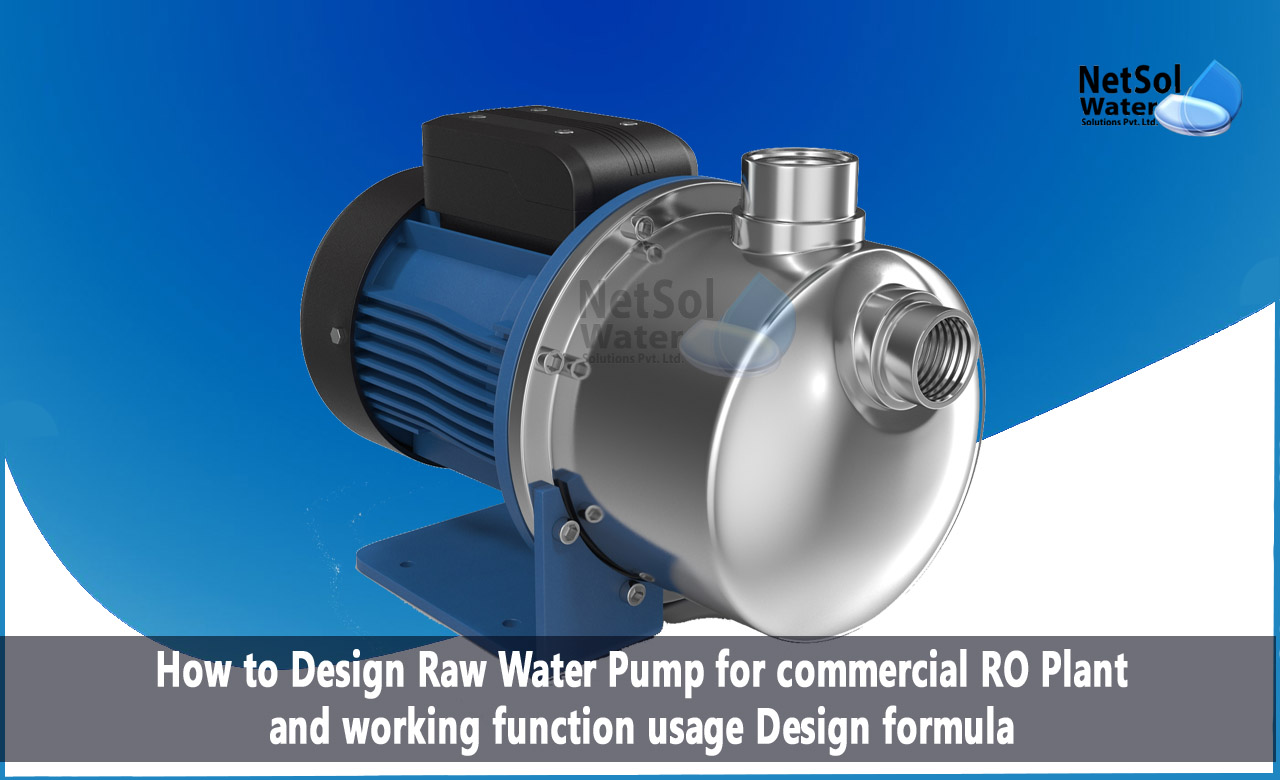How to Design Raw Water Pump for commercial RO Plant?
Raw water pumps are an essential component of commercial reverse osmosis (RO) plants. They are used to pump water from a source such as a well, river, or reservoir to the RO system. The design of a raw water pump is critical to the efficiency and effectiveness of the RO system.
In this blog, we will discuss how to design a raw water pump for a commercial RO plant, its working function, usage, design formula calculation with examples in detail.
Working Function and Usage of Raw Water Pump for Commercial RO Plant
A raw water pump is used to deliver water from a source to a treatment plant. The pump creates a pressure difference that allows water to flow through the system. In the case of an RO plant, the raw water pump is responsible for delivering water to the pretreatment system, which includes filters and other equipment that removes impurities and solids from the water before it enters the RO membrane.
The design of the raw water pump depends on the flow rate and pressure required by the RO system. The flow rate is measured in gallons per minute (GPM), and the pressure is measured in pounds per square inch (PSI). The design also considers the head of the pump, which is the vertical distance that the water must be lifted from the source to the RO system.
Design Formula Calculation for Raw Water Pump
Design Formula Calculation with Example in Detail:
To design a raw water pump for a commercial RO plant, the following steps can be followed:
Step 1: Determine the required flow rate of the RO plant in gallons per minute (GPM). This can be calculated using the formula:
GPM = Total daily water demand / 1440
For example, if the total daily water demand is 10,000 gallons, the required flow rate would be:
GPM = 10,000 / 1440 = 6.94 GPM
Step 2: Determine the total dynamic head (TDH) of the RO plant. TDH is the sum of the static head (SH) and the friction head (FH). SH is the vertical distance between the water source and the RO membranes, while FH is the resistance to flow caused by the pipes, valves, and fittings. TDH can be calculated using the formula:
TDH = SH + FH
For example, if the SH is 10 feet and the FH is 20 feet, the TDH would be:
TDH = 10 + 20 = 30 feet
Step 3: Select a pump that can deliver the required flow rate and TDH. The pump curve, which shows the relationship between flow rate and head, can be used to select the appropriate pump. The pump curve should intersect with the required flow rate and TDH. The pump's efficiency should also be considered to ensure that it is energy-efficient.
Step 4: Calculate the pump power (P) required using the formula:
P = (Q x TDH x S.G.) / (3960 x η)
Where Q is the flow rate in GPM, TDH is the total dynamic head in feet, S.G. is the specific gravity of the water, and η is the pump efficiency.
For example, if the flow rate is 6.94 GPM, TDH is 30 feet, S.G. is 1, and the pump efficiency is 80%, the pump power required would be:
P = (6.94 x 30 x 1) / (3960 x 0.8) = 0.65 horsepower
Step 5: Select a pump that meets the required flow rate, TDH, and power. The pump should also be compatible with the electrical supply and have suitable materials of construction for the water source.
Conclusion:
In summary, designing a raw water pump for a commercial RO plant involves calculating the required flow rate and TDH, selecting a pump that meets these requirements and is energy-efficient, and calculating the pump power required. Careful consideration of these factors can help ensure optimal performance and reliability of the RO plant.
Call Netsol water at +91-9650608473 or send an email to enquiry@netsolwater.com to know more.



